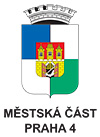Nová galerie v nové republice
typ výstavy: kolektivní
místo konání: Dům umění
termín: 2018/01/26 - 2018/12/31
poznámka:
Ostrava se v prvních desetiletích dvacátého století etablovala v nové průmyslové a společenské centrum, které získalo dominanci v regionu. Velmi záhy však začala pociťovat zásadní nedostatek adekvátního výstavního prostoru. Se vznikem Československa získaly její emancipační snahy nový impulz, na jehož základě vznikla idea Domu umění, který by prezentoval stálou expozici, jejíž základ tvořila Jurečkova obrazárna, vystavoval současné umění, sdružoval umělce a v neposlední řadě plnil výchovné a vzdělávací funkce. K realizaci výstavní budovy dopomohlo setkání Františka Jurečky, ostravského stavitele a sběratele umění, a prvního ředitele Domu umění Aloise Sprušila, který Jurečkův odkaz galerii neobyčejným způsobem rozvíjel v období první republiky.
Expozice představuje nejen umělecké poklady z období zrodu Domu umění, ale i architekturu budovy, zmíněné osobnosti a celou řadu archivních dokumentů.
During the first decades of the 20th century, Ostrava established itself as the dominant industrial and cultural centre of the region. However, the city soon had to contend with a critical lack of adequate exhibition premises. The creation of the independent Czechoslovakia in 1918 provided an impulse for bold, self-confident new projects in the cultural sphere – and one of these projects was the idea of building a new art gallery in Ostrava, to be known as the House of Art (Dům umění). It was to house a permanent exhibition based on František Jureček's gallery collection, as well as showcasing contemporary art, providing a forum for artists to meet and collaborate, and playing a valuable role in educating the general public about art. The project eventually became a reality largely thanks to the joint efforts of František Jureček (an Ostrava building contractor and art collector) and the gallery's first director Alois Sprušil, who played a crucial role in developing the legacy left by Jureček during the inter-war period.
The exhibition presents not only valuable works dating from the era when the House of Art came into existence, but also the architecture of the building, the roles played by Jureček and Sprušil, plus a large number of archive documents.












